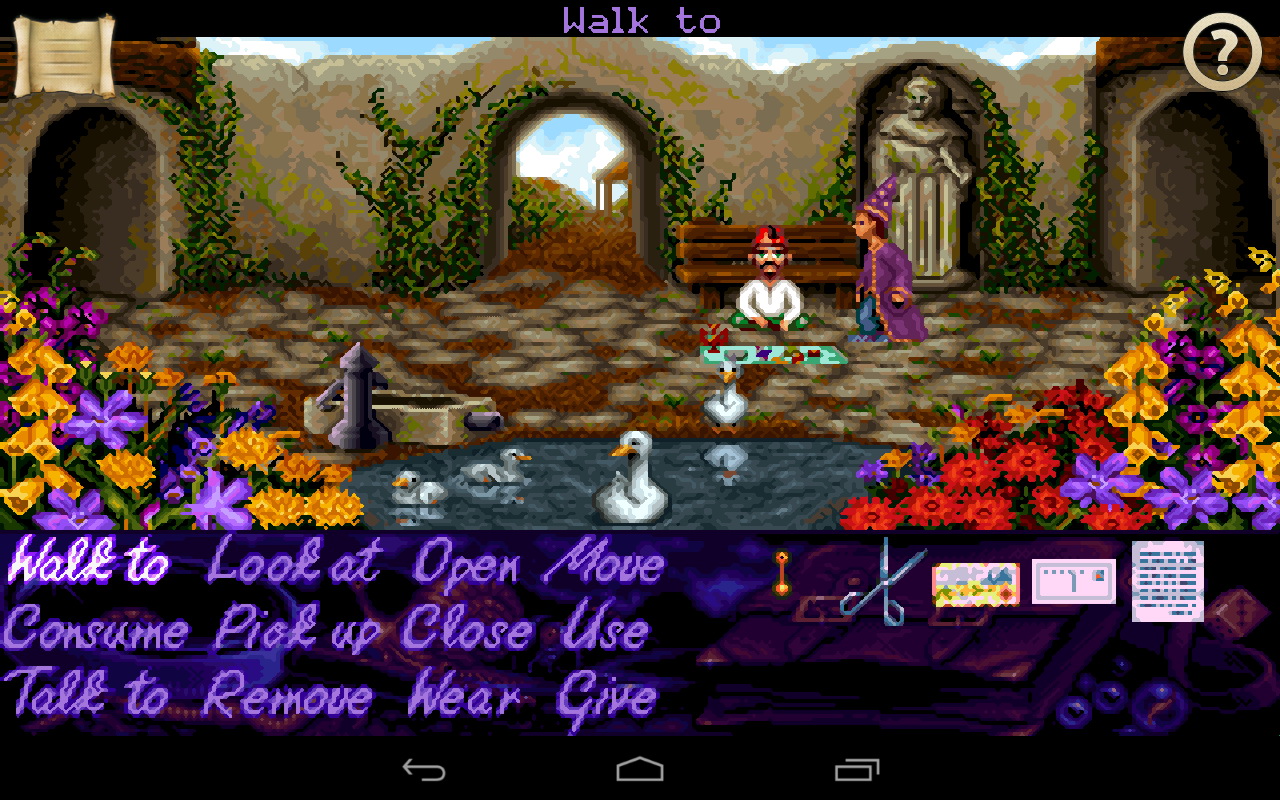

The game frequently parodies popular fairy tales and fantasy works and sometimes breaks the fourth wall as Simon directly talks to the player, acknowledging he is a character in a computer game. Whenever an important location is discovered, it is marked on the map for instant access, so that the player is not required to retrace his steps in order to revisit it. Although there is usually only one way to solve the puzzles, the player can work on multiple tasks at once, and exploration occupies a large portion of the game. The game world consists of dozens of interconnected screens, most of which are accessible from the very beginning. Like in LucasArts' adventures, it is impossible to get irrevocably stuck or die in Simon the Sorcerer. Most of the conversation choices are used for a humorous effect and are not required to pursue. Almost every character comes with an extended dialogue tree to explore. The puzzles are inventory-based: Simon will have to collect and carry a large number of items in order to advance in the game. Objects that can be interacted with are highlighted when the player hovers the mouse cursor over them. It features twelve verbs displayed on the screen at all times for interaction with the environment. Simon the Sorcerer is a point-and-click adventure game very similar to contemporary LucasArts titles (in particular Monkey Island) in concept and gameplay. Soon he realizes that he must play the role of an apprentice sorcerer and rescue a benevolent wizard called Calypso from an evil one, aptly named Sordid. Simon is promptly captured by goblins bent on cooking and eating him but manages to escape. Without thinking too much, Simon throws the book on the floor as a result, a portal opens, teleporting the boy and his dog into a fantasy world.

One day, his dog Chippy discovers a chest with a book inside, entitled Ye Olde Spellbooke. Simon is just an ordinary boy living in modern-day England.


 0 kommentar(er)
0 kommentar(er)
